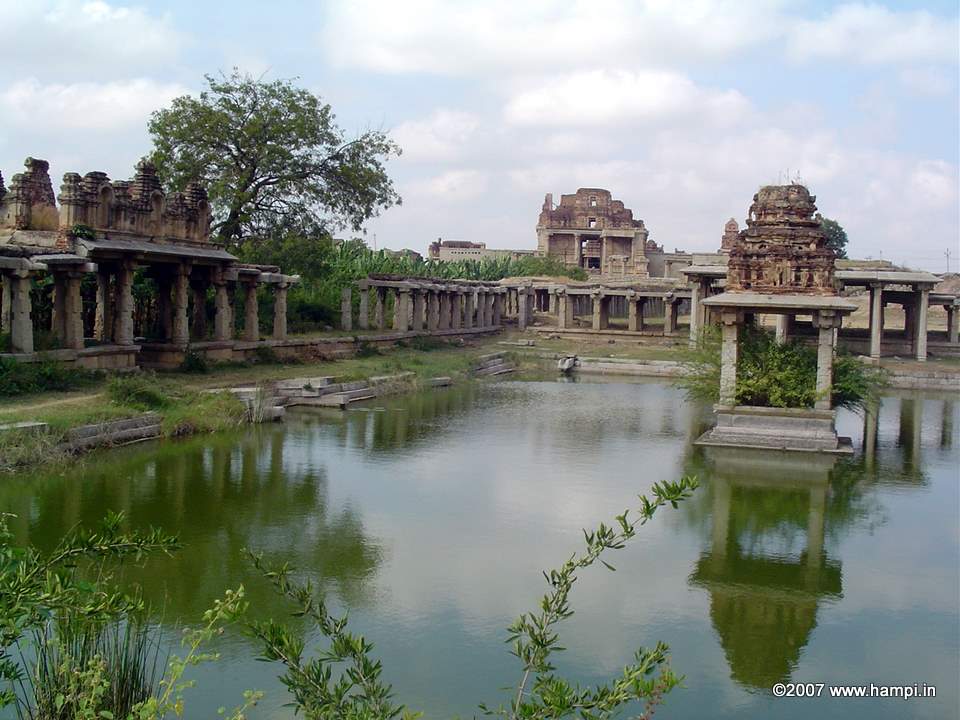Krishna Bazaar

K
rishna Bazaar is a relatively newly excavated site in Hampi. As the name indicates this Bazaar is associated with the Krishna Temple. Basically this was the car street for the temple. The sacred tank (Pushkarni) of the temple too is located next to the Krishna Bazaar.Unlike the many car streets associated with other large temples in Hampi, Krishna Bazaar is bit low laying with respect to the relatively elevated site of the temple. So you'll find a series of broad steps in front of the Krishna Temple to reach the bazaar street.
Thanks to the low laying terrain the whole bazaar got buried in silt over the time. This area later turned into thickets of banana plantations. Before the excavations it was impossible to tell that it was a marketplace once.
As you enter from the Krishna Temple side, you can see long rows of pavilions along the bazaar street. Also you'll see the excavated rubble bases of old structures and cobbled pathways.
A little ahead along the bazaar is the sacred tank. The interesting part of the tank is the small pavilion at its center and the many beautifully carved aquatic devices that is used to feed water to the tank.
A little off to the bazaar, facing the main road (to Hampi) and the Krishna Temple is a small pavilion with large rectangular box. This is carved out of a huge boulder and you can see a small rectangular opening at the top of this box. Devotees used to offer food grains during the functional days of this temple.
To visit Krishna Bazaar just cross the main road to Hampi after you've visited the Krishna Temple. You can also get a nice areal view of the Krishna Bazaar while climbing the Matunga Hill.
Presently the street doesn't lead to anywhere other than to the few local trails that go around the Matunga Hill or through the thick of the banana fields.

Temple Tank
This temple tank is located near the Krishna Bazaar

Excavation at Hampi
The steps at the Krishna Bazaar. Excavations in progress.

"Rice Box" near Krishna Temple
This stone box is used for collecting the offering by devotees
